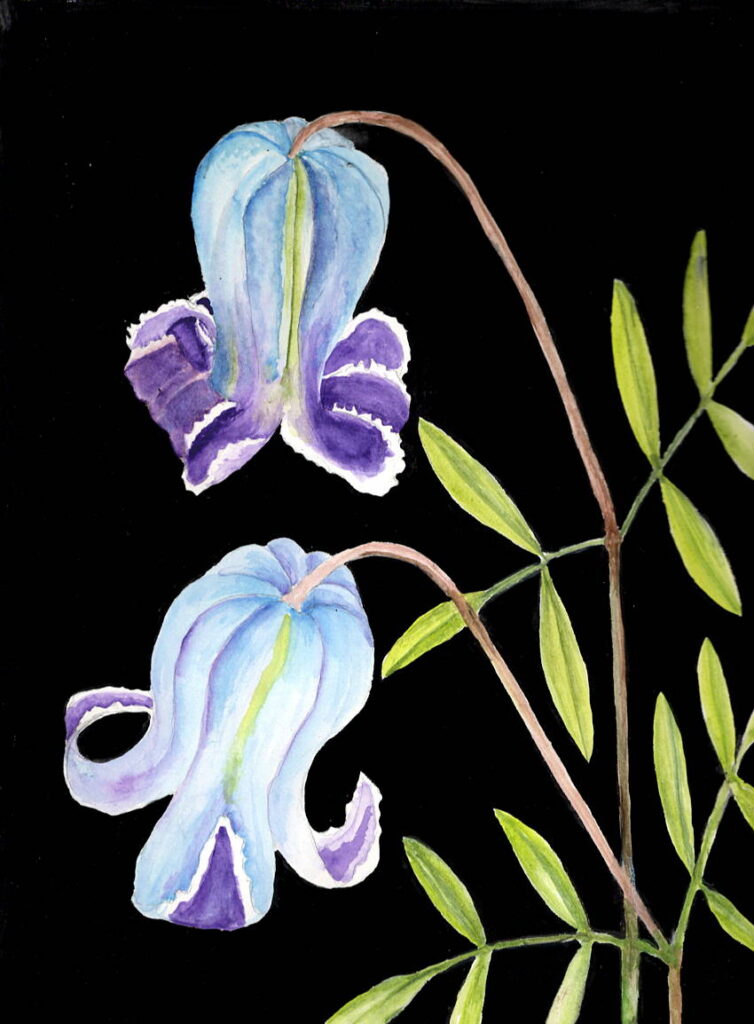A few weeks ago, I had the great privilege of presenting at the Chattahoochee Nature Center at a day long conference celebrating the joys and challenges of gardening both with and for nature.
I contributed as an artist / writer / storyteller to raise awareness of the most imperiled and threatened plants that grow in Georgia. There are nineteen Georgia native plants that are threatened with extinction and I cited the reasons why, offered some suggestions for what we can do to help and encouraged the audience to maintain hope for the future of conservation. We must keep hope! There is no alternative.

My talk was followed by that of Douglas Tallamy who said (not necessarily in reference to my plea of hope, I think, but in general) that hope is great and yes, essential, but it must be followed by action.
Douglas Tallamy has authored several books about taking action for the environment and his message is always the same. By changing the way we garden and planting native plants useful to the ecosystem, we can greatly alter the dire predictions for the loss of biodiversity in our future.
Though I’ve known his work and read his books, I was struck by the simplicity and power of his message about the absolute necessity of growing native plants, not just for pollinators but for the caterpillars which feed the birds and which can greatly increase biodiversity in even a small yard.
Dr. Tallamy stresses the fact that many of the caterpillar and insect species are host specific and that is why we need to grow such a diversity of native plants. A hillside of purple coneflower is native and great but how much better it is to have a hillside where a dozen different kinds of natives grow.

E.O. Wilson, the great writer and ecologist, says that “loss of biodiversity is a greater threat to conservation than climate change.” What is so important about diversity?
Think of it like going to Baskin Robbins. If, suddenly, there were only a half dozen ice cream flavors rather than 31, it doesn’t just mean that our choices would be limited, it means that some ice-cream specific people who survived by eating a single kind (say strawberry) would starve to death if strawberry ice cream was no longer available. Then we would lose not only strawberry ice cream but all the people who were completely dependent on it. For those people, a lack of diversity is not just disappointing, it’s life threatening. In nature, for a host specific insect to lose its host plant means certain death.
So how do we help? By making our yards or flower pots or window boxes a virtual Baskin Robbins of yummy plant materials for the birds, caterpillars, insects, pollinators. (It’s not necessary to know which plants serve what species, just plant a variety and they will come.) By planting oak trees and shrubs and flowering plants that are useful to the environment rather than the ones that just look pretty. By taking action. By maintaining hope. While we may feel limited in our ability to alter climate change, we can all do something to increase biological diversity. Pledge to plant a native this spring, even if it’s in a pot.
I will continue to plant my beloved zinnias and dahlias but I hope to stuff, in every available nook and cranny a whole ice cream store full of native plants and pray the the caterpillars come and eat every single leaf. And that the birds will come and eat the caterpillars and that my yard can serve to help increase diversity at a time when it is so desperately needed.
